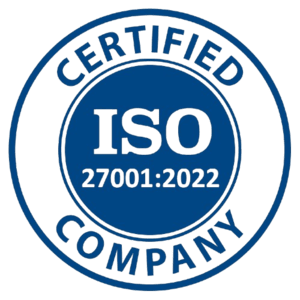Efficient coordination between internal and external communications can propel organizational success, by fostering a productive environment

This article will examine the significance of communication alignment, evaluate existing approaches, and offer actionable suggestions to develop consistent messaging.
What is the Importance of Communication Alignment?
For interactions and collaboration to be successful, communication alignment is essential. It entails making certain that the message, objectives, and context are understood by all parties.
Here are some key reasons why communication alignment is important:
- Comprehension: Coordinated communication guarantees that information is appropriately understood while lowering the likelihood of misconceptions.
- Efficiency: Clear communication reduces the amount of time needed for corrections, which results in more fruitful exchanges.
- Goal achievement: Coordinated communication makes it easier for individuals to work together to accomplish shared goals.
- Conflict avoidance: Effective communication alignment helps avert needless disputes and confrontations by cutting down on miscommunications.
- Building trust: Consistent communication promotes trust among team members.
- Improved decision-making: Coordinated communication guarantees that each party has access to the same data, which promotes better decision-making.
- Relationships: Relationships are strengthened through professional communication.
- Improved problem-solving: Collaborative problem-solving works best when all parties are aware of the problem.
- Enhanced engagement: Individuals who clearly understand their objectives are more likely to be involved.
- Messaging consistency: Coordinated communication makes maintaining a consistent message for various platforms easier.
Also Read – Top 12 Best Practices for Virtual Communication to Implement Today
How to Align Internal and External Communication for Your Team
Let’s discuss how to develop a unified communication strategy that appeals to your organization’s internal and external stakeholders.
1. Evaluating Your Present Communication Approaches
It’s important to know where your organization stands in terms of communication, before adjusting. This evaluation will give you essential information about your areas of growth.

Begin by thoroughly auditing all of your current internal and external communication routes. This may include:
- Internal channels: Email, intranet, team messaging apps, meetings, newsletters
- External channels: Website, social media, press releases, customer service interactions, marketing materials
As you review these channels, consider the following questions:
- What is the primary purpose of each channel?
- How frequently is each channel used?
- Who is responsible for managing and updating each channel?
- How effective is each channel in reaching its intended audience?
- Have you made any redundant or insufficient efforts at communication?
Next, get input from a range of stakeholders, such as consumers. Use surveys to seek inputs and answers for this.
Pose queries like these:
- How would you rank our communication’s consistency and clarity?
- Regarding company news, updates, and projects, are you feeling adequately informed?
- Do you think there is any place where our communication could be strengthened?
- Which method of information delivery from our company do you prefer?
Examine the information gathered from your audit and feedback meetings to find trends, patterns, and areas that need further attention.
This will serve as the foundation for developing your aligned communication strategy.
2. Establishing Clear Communication Goals
Now that you have a comprehensive picture of your existing communication approach, it’s important to establish attainable goals for development. These objectives should support your overall business goals and cater to the needs of communication both internally and outside.

Some examples of communication goals might include:
- Improve customer satisfaction scores by 15%, through enhanced communication
- Use more effective communication technologies to implement a 30% reduction in the volume of internal emails.
- Increase social media engagement rates by 25% by producing regular, excellent content.
Set specific objectives using the SMART framework. This will help you develop a clear road map for success.
Prioritizing your objectives according to their viability and possible impact is also crucial. Prioritize resolving the most pressing communication issues, then take incremental steps to achieve long-term gains.
3. Creating Consistent Messaging
When it comes to coordinating internal and external communication, consistency is essential. It is imperative for your organization to communicate in a uniform manner, irrespective of the media or audience. This means that the primary ideas, tone, and information should be the same in all communications, but not that every message has to be the same.

To create consistent messaging:
a) Create a thorough brand messaging guide: In this guide, your company’s values, goal, vision, and USPs should be outlined. Guidelines for tone of voice, main messaging points, and any particular vocabulary or terminology that should be utilized or avoided should also be included.
b) Create a content calendar: Plan your communication efforts across all channels in advance. This will guarantee that the signals you send out on the outside and within are consistent and complimentary.
c) Put in place a review procedure: Create a framework for examining and approving correspondence, prior to distribution. This can assist in identifying discrepancies and guarantee that all communications adhere to your brand standards.
d) Make use of pre-approved material and templates: Create templates for frequently sent communications, like social media postings, internal memos, and press releases. In the process of creating content, this will help to ensure consistency and save time.
f) Promote cooperation across departments: To ensure that your teams pursue the same objectives, encourage regular meetings between your public relations departments.
4. Implementing Effective Communication Tools
When it comes to coordinating your internal and external communication initiatives, the correct tools can make a big impact.

The following are important factors to take into account while choosing and using communication tools:
Also Read – 9 best practices for engagement in virtual meetings
a) Selecting integrated platforms: Proactively look for resources that can help close the communication gap between internal and external parties.
c) Give user-friendliness first priority: Choose simple-to-use and intuitive tools. Your team’s communication attempts may be hampered rather than helped by technological difficulties.
c) Take into account mobile accessibility: It’s critical to select solutions that offer strong mobile capability because an increasing number of employees are working remotely or on the go.
e) Make use of social media monitoring resources: These platforms facilitate team communication and can assist you in keeping a consistent external presence across many social media channels.
f) Make an analytics and reporting investment: To make data-driven decisions and monitor the success of your communication efforts, select solutions with strong analytics features.
Some popular tools to consider include:
- Slack or Microsoft Teams for internal messaging and collaboration
- Hootsuite or Sprout Social for social media management
- Salesforce or HubSpot for customer relationship management
- Asana or Trello for project management and task tracking
- Constant Contact or Mailchimp for newsletters and email marketing
Keep in mind that the particular tools you select should fit the needs, size, and budget of your organization. Starting with a small core toolkit and adding to it progressively as your technology stack grows is generally a good idea.
5. Training and Empowering Your Team
If the members of your team are not adequately trained and given the authority to utilize the tools, no communication plan or set of tools will be successful.

Here’s how to make sure your group is ready to coordinate communications both inside and outside the company:
a) Provide comprehensive training: Offer training sessions on your new communication strategy, tools, and best practices. This should include both technical training on how to use specific platforms and strategic training on effective communication techniques.
b) Establish communication champions: Choose people who can act as ambassadors for communication from each department. These team members can function as a liaison between staff and leadership, support their peers, and advance best practices.
c) Establish unambiguous communication guidelines: Establish and disseminate guidelines that specify what is expected of communication across different mediums. Information about acceptable tones, reaction times, and escalation protocols for delicate matters should be included.
d) Promote reciprocal communication: Encourage an environment where employees are at ease offering suggestions, asking questions, and providing feedback. This can help identify potential communication issues early and promote continuous improvement.
e) Provide continuous assistance and materials: Give your staff access to materials like best practice manuals, FAQ sheets, and communication templates. To assist less-seasoned team members in improving their communication abilities, think about putting in place a mentoring programme.
f) Set a good example: Make sure that the leadership continuously exemplifies effective communication techniques. This entails responding promptly, being open, and keeping messaging consistent throughout internal and external channels.
g) Acknowledge and honor excellent communication: Put in place a procedure to honor team members who succeed in harmonizing their internal and external communications. This can inspire others to develop their talents and serve to emphasize the significance of these efforts.
h) Handle linguistic and cultural differences: To guarantee effective communication between all teams, especially if your company is multi-cultural and works with people from other countries, consider offering language support services and training on cross-cultural communication.
6. Evaluating Communication Effectiveness
Establishing a system for continuous assessment is essential to guarantee the effectiveness of your efforts to harmonize internal and external communication. This will enable you to make data-driven choices regarding your communication plan.

The following are essential actions to properly track and assess your communication efforts:
a) Determine the KPIs (key performance indicators): Establish precise metrics that correspond with your communication objectives. These might include:
- Employee engagement scores
- Customer satisfaction ratings
- Social media engagement rates
- Website traffic and conversion rates
- Internal message open and response rates
- Press mention sentiment analysis
b) Implement regular reporting: Set up a system for regular reporting on your KPIs. This could include annual comprehensive reports, quarterly review meetings, or weekly dashboards.
c) Hold regular feedback sessions and surveys: To find out how stakeholders—internal and external—view your communication initiatives, ask for input on a regular basis. These qualitative data can offer insightful information that quantitative measurements might miss.
d) Conduct content evaluations: Make sure all of your communications are consistent and in line with your brand messaging guide by regularly reviewing them across all media. Look for areas where messages may be conflicting or unclear.
e) Examine communication patterns: Make use of virtual event analytics technologies to study how information is shared both internally and outside of your company. This might assist in locating any gaps or bottlenecks in your communication procedures.
f) Keep an eye on external perceptions: Review sites, social media, and media monitoring can all be used to keep tabs on the image of your company. This might assist you in determining any discrepancies between the messaging you meant to convey and how your external communication efforts are being received.
g) Perform competition analysis: Evaluate your competitors’ internal and external communication strategies on a regular basis. This can give you insightful information and point out areas in which your company might stand out from the competition.
h) Make use of A/B testing: When applicable, compare the efficacy of various communication strategies using A/B testing. For outward messages like email marketing or social media posts, this can be especially helpful.
i) Use machine learning: Consider employing technologies with AI capabilities to spot trends that might not be obvious at first glance.
j) Arrange frequent review meetings: Set up regular get-togethers with essential stakeholders to come up with ideas for enhancements. To guarantee a comprehensive understanding of your communication endeavors, it is ideal that representatives from multiple departments attend these sessions.
k) Be ready to adapt: Be prepared to modify your communication plan as necessary in light of the findings of your monitoring and evaluation. This could entail developing new tools and procedures, fine-tuning your messaging, or changing the balance of your channels.
Conclusion
Aligning internal and external communication requires flexibility. By assessing your evaluation comprehensively, you can develop a cohesive communication approach that is well-received by your internal and external stakeholders and your organization.
Remember that effective communication alignment is an ongoing process of progress rather than a one-time event. Never stop prioritizing your internal and external audiences in your communication endeavors.
Setting a high priority on synchronized communication will benefit your company by increasing clarity as well as forging closer bonds with other external stakeholders. Ultimately, an all-encompassing approach to communication can set up your company for long-term success in a world where connectivity is becoming more important.
FAQ
Aligning internal and external communication ensures that all organizational members are on the same page. This alignment contributes to increased teamwork, audience trust, and overall business efficiency.
Common challenges in aligning internal and external communication include:
- Consistency in Messaging: Ensuring that internal messages align with external communications to avoid mixed signals can be difficult, especially in large organizations.
- Timing: Coordinating the timing of internal and external announcements so that employees are informed before the public can be challenging.
- Access to Information: Employees may not have the same information as external stakeholders, leading to discrepancies in communication.
- Cultural Differences: Variations in language and cultural norms between internal teams and external audiences can create communication gaps.
- Technology Integration: While tools like intranets facilitate internal communication and PR software manages external messaging, integrating these systems for seamless communication can be complex.
Platforms that integrate these tools can help address these challenges by streamlining communication and ensuring consistency across all channels.
To ensure internal communication supports external messaging, establish clear communication goals and core messages that reflect your brand values. Train your team regularly, use integrated communication tools, and create a feedback loop to continuously improve alignment.
To align internal and external communication effectively, several tools can be utilized:
- Internal Intranets: These platforms facilitate internal communication by providing a centralized hub for sharing updates, documents, and resources with employees.
- PR Software: Tools like media monitoring platforms, press release distribution services, and social media management software help manage and coordinate external communication.
- Integrated Communication Platforms: Solutions that combine intranet capabilities with PR tools allow for streamlined communication, ensuring consistency and alignment between what is communicated internally and externally.
By using these tools in tandem, organizations can ensure that their messaging is consistent, timely, and aligned across all channels.
Establish precise measures to gauge the efficacy, such as customer satisfaction, staff engagement, and message coherence across channels. Conduct surveys and audits on a regular basis to get input and make the required changes to enhance alignment.




























